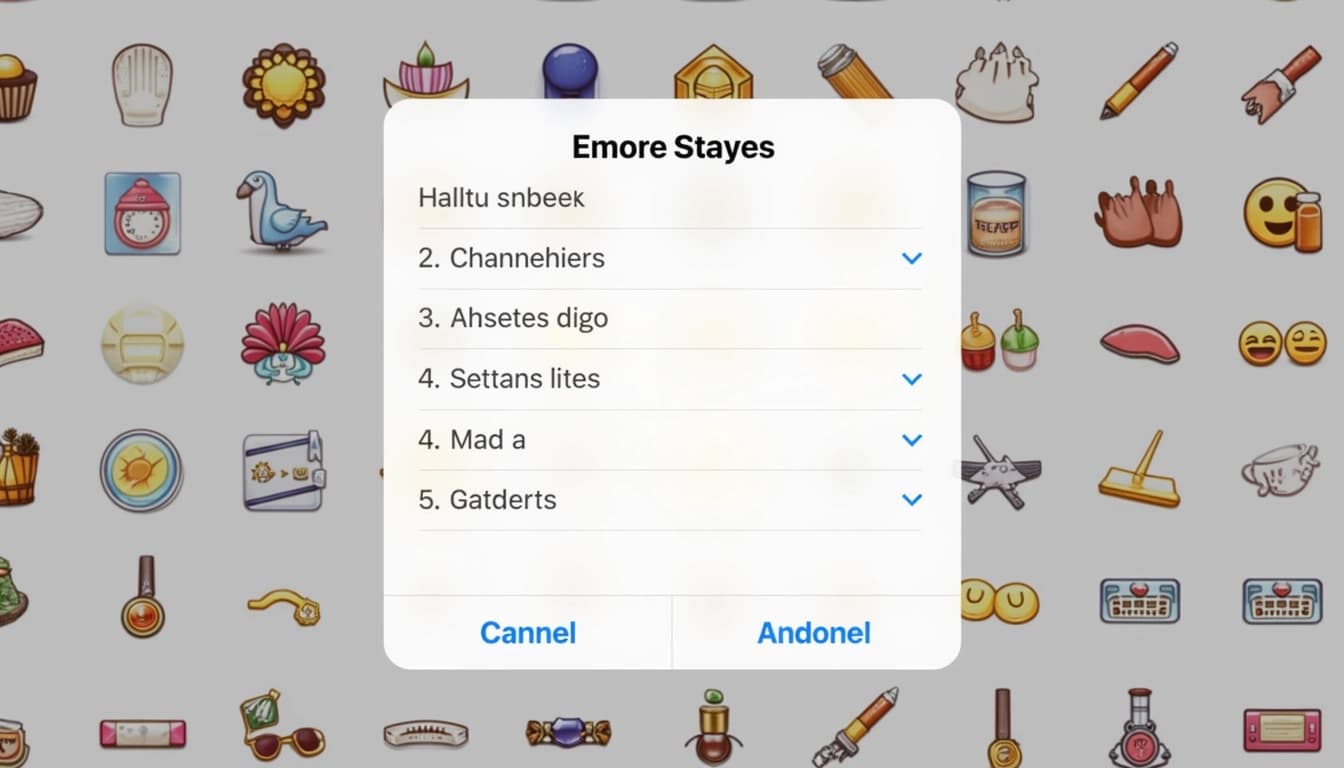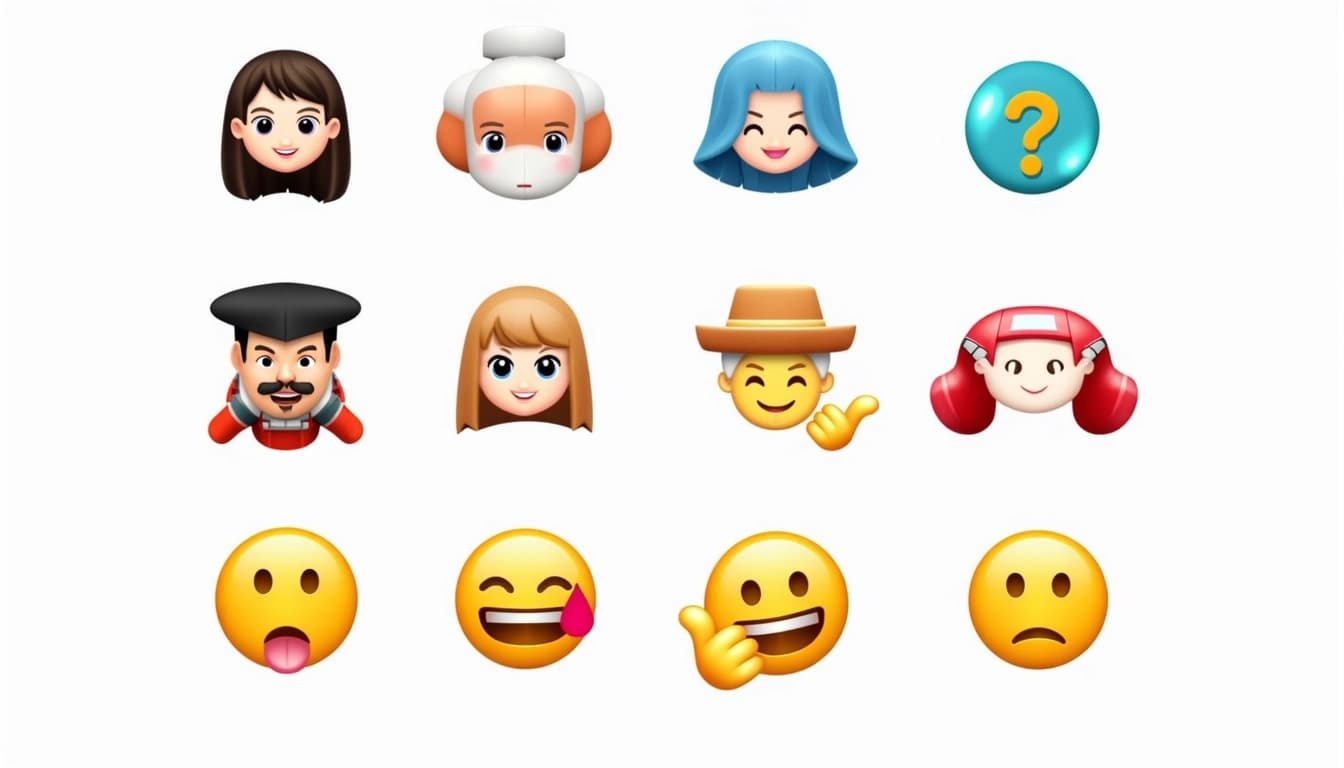
Key Points on sdxl-emoji and Apple-Style Emoji Generation
By John Doe 5 min
Key Points
Research suggests sdxl-emoji, a fine-tuned AI model, turns text prompts into Apple-style emojis using Stable Diffusion XL (SDXL).
It seems likely that the model uses Dreambooth LoRA and Textual Inversion, combined in Pivotal Tuning, to learn and generate Apple’s emoji style.
The evidence leans toward users including specific trigger tokens like `<s0><s1>` in prompts to activate the emoji style, with adjustable parameters like cross-attention scale.
What is sdxl-emoji?
sdxl-emoji is an AI model designed to generate images resembling Apple’s distinctive emoji style from text prompts. It builds on SDXL, a powerful text-to-image model, and is fine-tuned to replicate the colorful, cartoonish look of Apple emojis.
How Does It Work?
The model processes user prompts that include trigger tokens (e.g., `<s0><s1>`), which activate the Apple emoji style. It then generates an image by encoding the prompt, refining noise through diffusion, and applying learned style characteristics, ensuring the output matches Apple’s design language.
Unexpected Detail: Customizable Parameters
Beyond prompts, users can tweak settings like cross-attention scale to control how strongly the emoji style is applied, offering flexibility in generation.
Survey Note: Detailed Analysis of sdxl-emoji and Apple-Style Emoji Generation
This note provides an in-depth exploration of how the sdxl-emoji model transforms text prompts into Apple-style emoji characters, leveraging advanced AI techniques. The analysis is grounded in available documentation and model descriptions, offering a comprehensive view for researchers, developers, and enthusiasts interested in AI-generated visual content.
Introduction to sdxl-emoji
sdxl-emoji is a specialized AI model hosted on platforms like Hugging Face and Replicate, created by fofr, focusing on generating images that mimic Apple’s emoji style. Apple’s emojis are known for their simple, colorful, and cartoonish design
The sdxl-emoji model is a specialized version of Stable Diffusion XL designed to generate emojis in the style of Apple's emoji designs. These emojis are characterized by their glossy, cartoon-like appearance, often featuring specific shading and outlines. This model extends the capabilities of Stable Diffusion XL (SDXL), an advanced iteration of the Stable Diffusion text-to-image model, to produce custom emojis from textual descriptions.
SDXL, developed by Stability AI, enhances image quality and resolution compared to earlier versions, making it suitable for detailed emoji generation. The sdxl-emoji model is fine-tuned to specialize in replicating Apple’s aesthetic, enabling users to create emojis for messaging, social media, or branding purposes.
Background: Stable Diffusion and Fine-Tuning
Stable Diffusion and SDXL Overview
Stable Diffusion is an open-source text-to-image model that uses a latent diffusion approach to generate high-quality images from text prompts. SDXL, or Stable Diffusion XL, is an enhanced version with improved performance, offering higher resolution and better detail, which is critical for generating precise emoji visuals.
Fine-Tuning Process
Fine-tuning involves adjusting a pre-trained model’s parameters to better suit a specific task or style. For sdxl-emoji, this means adapting SDXL to focus on Apple’s emoji design language, ensuring generated images align with characteristics like color palettes, shading, and glossy finishes associated with modern emojis.
Training Methodology: Dreambooth, LoRA, and Textual Inversion
The training of sdxl-emoji relies on advanced techniques, particularly Pivotal Tuning, which combines several methods to achieve its specialized output. Dreambooth personalizes text-to-image models by learning new concepts from a small set of images. For sdxl-emoji, Dreambooth is used to train the model on a dataset of Apple emojis, enabling it to understand and replicate their style.
LoRA (Low-Rank Adaptation) is a method to fine-tune large models efficiently by updating only a subset of parameters. This technique helps in adapting the model to specific styles without requiring extensive computational resources. Textual Inversion is another method used to embed new concepts into the model by learning from textual descriptions, further enhancing the model's ability to generate accurate emoji representations.
Conclusion & Next Steps
The sdxl-emoji model represents a significant advancement in custom emoji generation, leveraging the power of SDXL and fine-tuning techniques to produce high-quality, Apple-style emojis. Future developments could include expanding the model's capabilities to other emoji styles or integrating it into messaging platforms for real-time emoji creation.
- Explore additional emoji styles beyond Apple’s design language.
- Integrate the model into social media platforms for user-generated emojis.
- Enhance the model’s resolution for even more detailed emoji outputs.
The sdxl-emoji model is a specialized version of the Stable Diffusion XL (SDXL) model, fine-tuned to generate Apple-style emojis. This adaptation leverages advanced techniques like Dreambooth, LoRA, and Textual Inversion to achieve high-quality, stylistically consistent outputs. The model is designed to respond to specific trigger tokens, making it easy for users to generate emojis that match Apple's design language.
Fine-Tuning Techniques
The model employs several fine-tuning methods to specialize the SDXL base model for Apple emoji generation. Dreambooth allows the model to learn new concepts with minimal data, while LoRA (Low-Rank Adaptation) reduces computational overhead by focusing on the most significant weights. Textual Inversion introduces trigger tokens that activate the Apple emoji style, providing a user-friendly way to generate styled outputs.
Dreambooth and LoRA
Dreambooth is used to teach the model the Apple emoji style with a small dataset. LoRA complements this by optimizing the fine-tuning process, ensuring efficiency without sacrificing quality. Together, these techniques enable the model to produce emojis that closely resemble Apple's design, including their distinctive color palettes and shading.
Textual Inversion and Pivotal Tuning
Textual Inversion creates trigger tokens like `<s0><s1>` that users can include in prompts to activate the Apple emoji style. Pivotal Tuning combines Dreambooth LoRA with Textual Inversion, ensuring the model learns the style effectively while remaining easy to use. Although diffusers don't yet support Textual Inversion for SDXL, the model uses cog-sdxl's TokenEmbeddingsHandler to handle this functionality.
Operational Mechanism
The model transforms text prompts into Apple-style emojis through a multi-step process. Users input a prompt with trigger tokens, which the model tokenizes and encodes. The diffusion process then generates the emoji, guided by the learned style parameters. This ensures consistent, high-quality outputs that align with Apple's design principles.
Prompt Input and Tokenization
Users provide a prompt containing trigger tokens and a description of the desired emoji. The model tokenizes this input, with the trigger tokens signaling the Apple emoji style. This step is crucial for ensuring the model interprets the prompt correctly and applies the appropriate styling.
Diffusion Process
The model starts with random noise and iteratively refines it into a coherent image. The fine-tuned weights and trigger tokens guide this process, ensuring the final output matches the Apple emoji style. This iterative approach allows for detailed, stylistically consistent results.
Conclusion & Next Steps
The sdxl-emoji model demonstrates how advanced fine-tuning techniques can specialize a general-purpose model for specific tasks. By combining Dreambooth, LoRA, and Textual Inversion, the model achieves high-quality Apple-style emoji generation. Future developments could expand the model's capabilities to include additional styles or improve its efficiency further.

- Fine-tuned using Dreambooth and LoRA
- Uses trigger tokens for style activation
- Generates consistent Apple-style emojis
The sdxl-emoji model is a specialized variant of the Stable Diffusion XL (SDXL) model, fine-tuned to generate Apple-style emojis from text prompts. It leverages Pivotal Tuning, combining Dreambooth LoRA and Textual Inversion, to achieve its unique style. This model is particularly useful for creating custom emojis for messaging apps, social media, branding, and educational materials.
Model Architecture and Training
The sdxl-emoji model is built on the SDXL architecture, which is known for its high-quality image generation capabilities. The model was fine-tuned using a dataset of Apple emojis, ensuring that the outputs align with the distinctive Apple aesthetic. The training process involved Pivotal Tuning, a method that combines Dreambooth LoRA for parameter-efficient fine-tuning and Textual Inversion for embedding specific styles into the model.
Key Features of the Model
One of the standout features of the sdxl-emoji model is its use of trigger tokens, specifically `<s0><s1>`, to activate the Apple emoji style. Users can adjust the cross-attention scale, with a default setting of 0.8, to control the intensity of the style. The model is accessible via Hugging Face and Replicate, with options for local deployment using Docker and COG, making it versatile for different use cases.
Performance and Limitations
The model performs well in generating Apple-style emojis, with typical run times ranging from 8 to 15 seconds on Nvidia L40S or A40 GPUs. However, it has some limitations, such as potential biases toward the Apple emoji aesthetic, which may limit its versatility for other styles. Additionally, the model might produce less coherent outputs when the prompts are overly complex or ambiguous.
Use Cases and Applications
The sdxl-emoji model is ideal for creating custom emojis for personal or commercial use. It can be integrated into messaging apps, social media platforms, and branding materials to enhance user engagement. Educational applications include creating visual aids and interactive learning tools. The model's cost-effectiveness, at approximately $0.0077 per run on Replicate, makes it accessible for experimentation and small-scale projects.
Comparative Analysis with Similar Models
The sdxl-emoji model is part of a family of SDXL variants, each with unique specializations. Compared to models like sdxl-color or realistic-emoji, sdxl-emoji stands out for its focus on Apple-style emojis. Its use of Pivotal Tuning sets it apart from other models that may rely on different training approaches, offering a balance between style fidelity and computational efficiency.
Conclusion & Next Steps
The sdxl-emoji model is a powerful tool for generating Apple-style emojis, combining the robustness of SDXL with specialized fine-tuning techniques. While it has some limitations, its accessibility and cost-effectiveness make it a valuable resource for developers and creatives. Future enhancements could include expanding the model's versatility to support other emoji styles and improving coherence for complex prompts.
- Fine-tuned on Apple emojis using Pivotal Tuning
- Trigger tokens `<s0><s1>` activate the Apple style
- Adjustable cross-attention scale for style intensity
- Accessible via Hugging Face and Replicate
- Cost-effective at ~$0.0077 per run